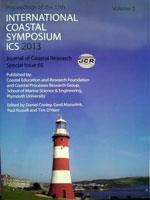Cravo, A., Cardeira, S., Pereira, C., Rosa, M., Madureira, M., Rita, F., Luís, J. and Jacob, J., 2013. Nutrients and particulate matter exchanges through the Ria Formosa coastal lagoon.
The Ria Formosa lagoon (south coast of Portugal) is a highly productive shallow mesotidal system of high water renewal through six permanent connections to the ocean. The three inlets in the western sector represent ~ 90% of the total tidal prism. To understand spatial and temporal dynamics of nutrients, chlorophyll a (proxy of phytoplankton) and particulate matter, data acquisition of these parameters along with current velocity was conducted hourly during two consecutive semi-diurnal spring and neap tidal cycles (~12.5 h) in the three inlets of Ria Formosa western sector, in late autumn of 2011. In all three inlets, nutrients ranges were typical for this time of the year, varying in antiphase relative to tidal signal, although less evident during the neap tide. Chlorophyll a and suspended solids concentrations were lower during the neap tidal cycle with less evident tidal variation than for nutrients. Net transport results show that Ria Formosa plays an important role in the mass export of nutrients to the adjacent coastal area, particularly during spring tides, with a greater contribution by the Faro-Olhão inlet, followed by the Armona and Ancão inlets. These two, regardless of the residual tidal prism, export nutrients while suspended solids were imported. The Faro-Olhão inlet presented different behaviour: it acts as a flood dominated inlet importing chlorophyll a and nitrate, and exporting ammonium and suspended solids. Nonetheless, values can change due to tidal variability, asymmetry and distortion, and interconnection of inlets inside the lagoon. To further understand the seasonal variation of this system more surveys will be conducted.





